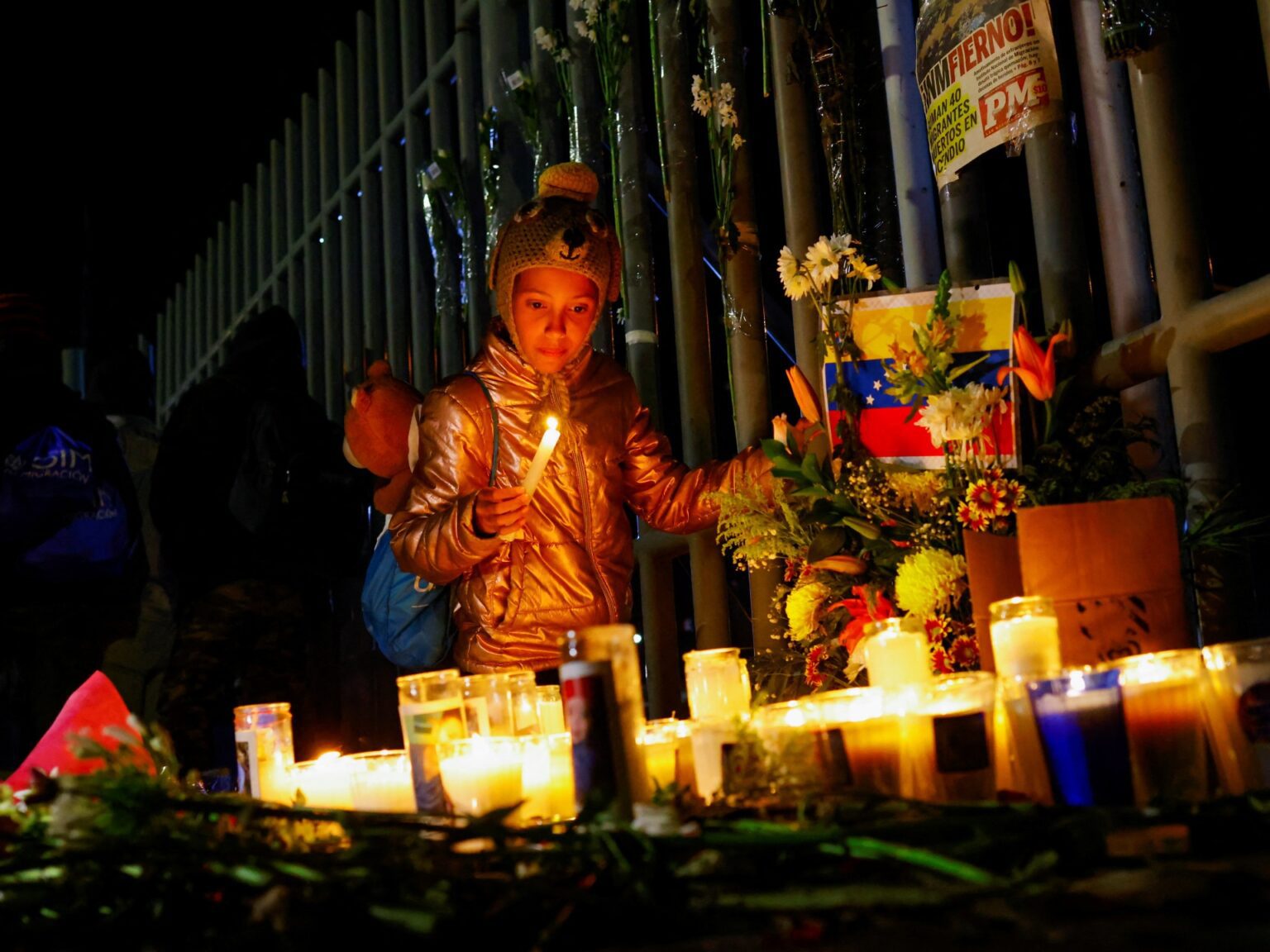Global Courant 2023-04-16 23:14:50
On March 27, 40 men were killed in a fire at a migrant detention center in Ciudad Juárez, Mexico, just across the border from El Paso, Texas. The victims came from Colombia, Ecuador, El Salvador, Guatemala, Honduras and Venezuela.
Like so many thousands of refugees from around the world, they had been imprisoned in Mexico for the crime of seeking a better life in the United States – forcing their southern neighbor to act as a deputy gatekeeper and migrant antagonist.
I arrived in Ciudad Juárez 10 days after the fire. In front of the charred facade of the detention center was an altar with candles, flowers and portraits of the deceased. There I spoke to a young Venezuelan man who had lost a friend in the fire and had been camping in the cold next to the shrine ever since.
He pulled out his battered phone and showed me a TikTok tribute to his friend—a man with a big smile and a baby boy in Venezuela—and a series of photos of a dove that had recently come to pay homage at the altar. The images of the bird caused a tender reflection from my interlocutor: “They are such delicate creatures.”
According to the official account, the blame for the fire in Ciudad Juárez lies primarily with the individual prisoners who set fire to their mattresses in the hope of being freed – an apparently reckless act, perhaps, if one does not consider that these people were already a form of hell even before the addition of literal flames.
Having been briefly confined myself in a migrant detention center in Mexico – where many people are kept in limbo indefinitely, amounting to psychological torture – I can attest to the landscape of utter desperation, as well as the lack of good food and water used by numerous Ciudad Juárez inmates.
At one point during my time in the infamous Siglo XXI prison in the southern Mexican state of Chiapas — the opposite end of Juárez in terms of Mexico’s area of U.S. border enforcement duties — not a drop of drinking water was available to the hundreds of us who were detained in the women’s section. Only after lengthy negotiations with the policewoman guarding the waiting area’s metal door was I allowed through long enough to hoist a 20-gallon water container onto my hip and ride back inside.
However, sometimes desperation can be inflammable. And in Ciudad Juárez, the blame for the detention center fire ultimately extends far beyond even the guards and the Mexican immigration authorities who spontaneously decided it was better to just let everyone die rather than open the cell doors.
At the end of the day, it was an inferno made in the US, and not just because the US requires Mexico to do its dirty work against migration — a position that Mexican President Andrés Manuel López Obrador has wholeheartedly embraced even as he pretended to somehow defy the US government.
Washington has long specialized in inflicting diabolical torments on the rest of the world, whether in the form of bombings, economic disasters, support for right-wing regimes and death squads — or a combination of the above, as Central and South Americans should do very well. know.
Indeed, it is this history that fuels a significant portion of migration to the US in the first place.
And while the fire in Ciudad Juárez quite explicitly evokes the underworld, the whole thing about seeking asylum in the US is pretty hellish.
I traveled to Ciudad Juárez on April 6 to reunite with a group of young Colombian and Venezuelan men I had met in Panama in February as they emerged from the corpse-strewn stretch of jungle known as the Darién Gap — in Spanish often referred to as el infierno verde, or “the green hell”.
We had been in constant contact via WhatsApp for over a month as they navigated the rest of Central America and Mexico, being constantly detained, extorted and robbed – all normal in the quest for refuge. And yet they maintained a grace and composure far beyond my own capabilities, as evidenced by the plethora of WhatsApp messages begging me to stop panicking because it was bad for my health.
We agreed to meet in Ciudad Juárez, which they reached after four days of traveling on top of the so-called “train of death‘ and which I reached after a two-hour flight from Mexico City – because I had the privilege of owning a passport from the country my friends risked their lives for.
In reality, their own version of the “American dream” involved not so much having a luxury car or house as having to work 24 hours a day, if possible, to send money to their families back home.
Given the US’ track record of wreaking havoc in both Colombia and Venezuela, it doesn’t seem like too much to ask.
Our reunion in Ciudad Juárez consisted of drinking a lot of beer, dancing to Colombian music, and cuddling what you think exists does make sense.
Although my friends had repeatedly tried to apply for legal entry into the US – through the mandatory CBP One app, which is more or less intentionally completely dysfunctional – their general lack of funds and other factors forced them to organize an “illegal” border crossing into El Paso on April 8.
That evening I got the news via WhatsApp: “Mom, they detained us” – the “they” are, of course, US immigration personnel.
And while the US continues to create far more circles of hell than Dante Alighieri could have ever imagined, at least pigeons are still out there.
The views expressed in this article are those of the author and do not necessarily reflect the editorial view of Al Jazeera.








